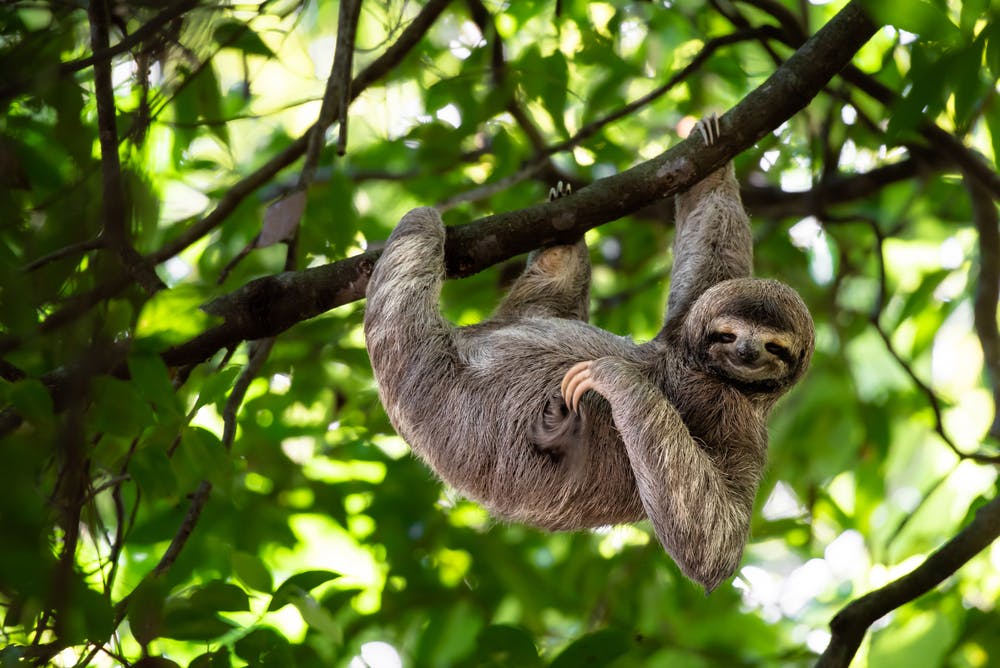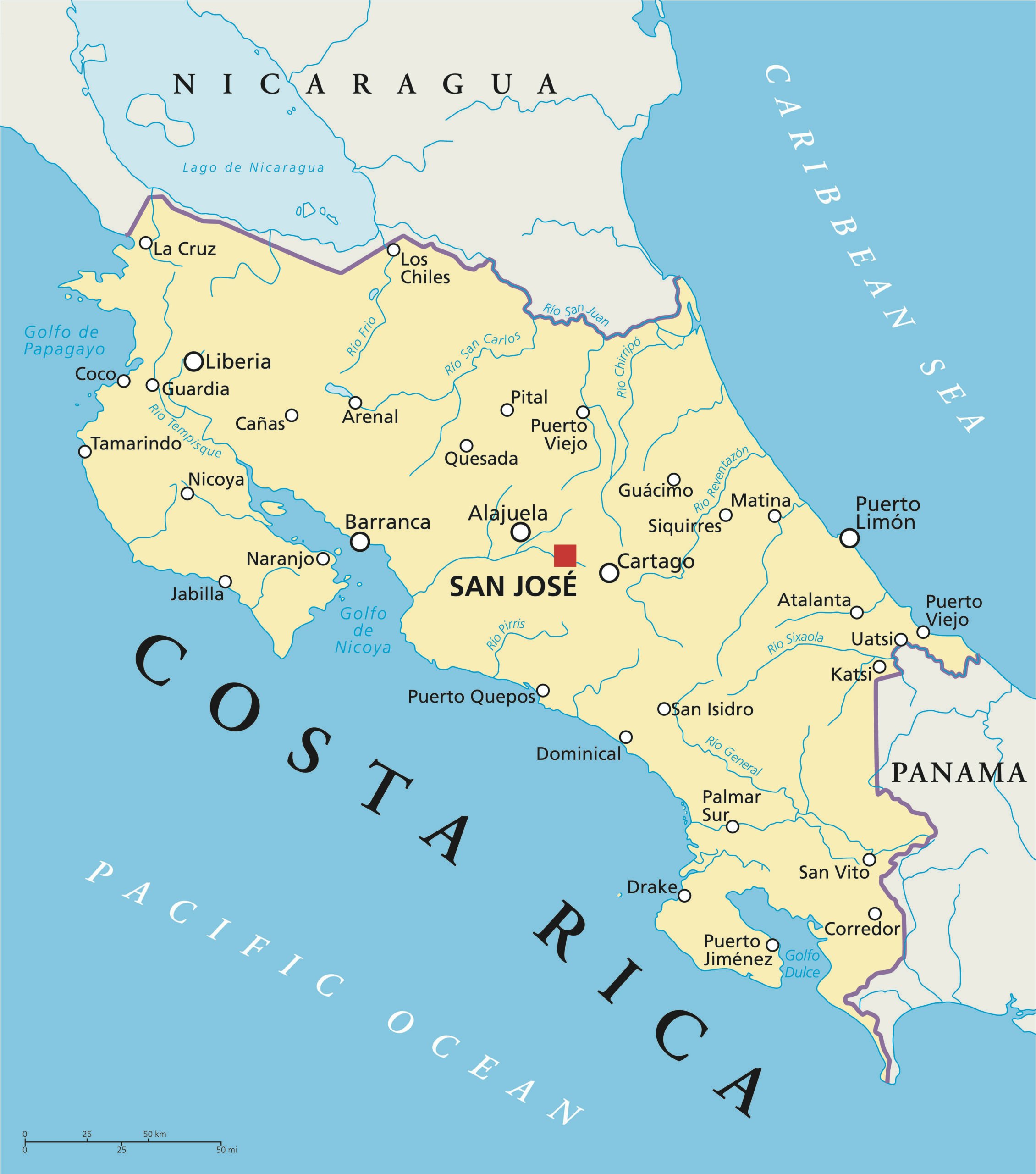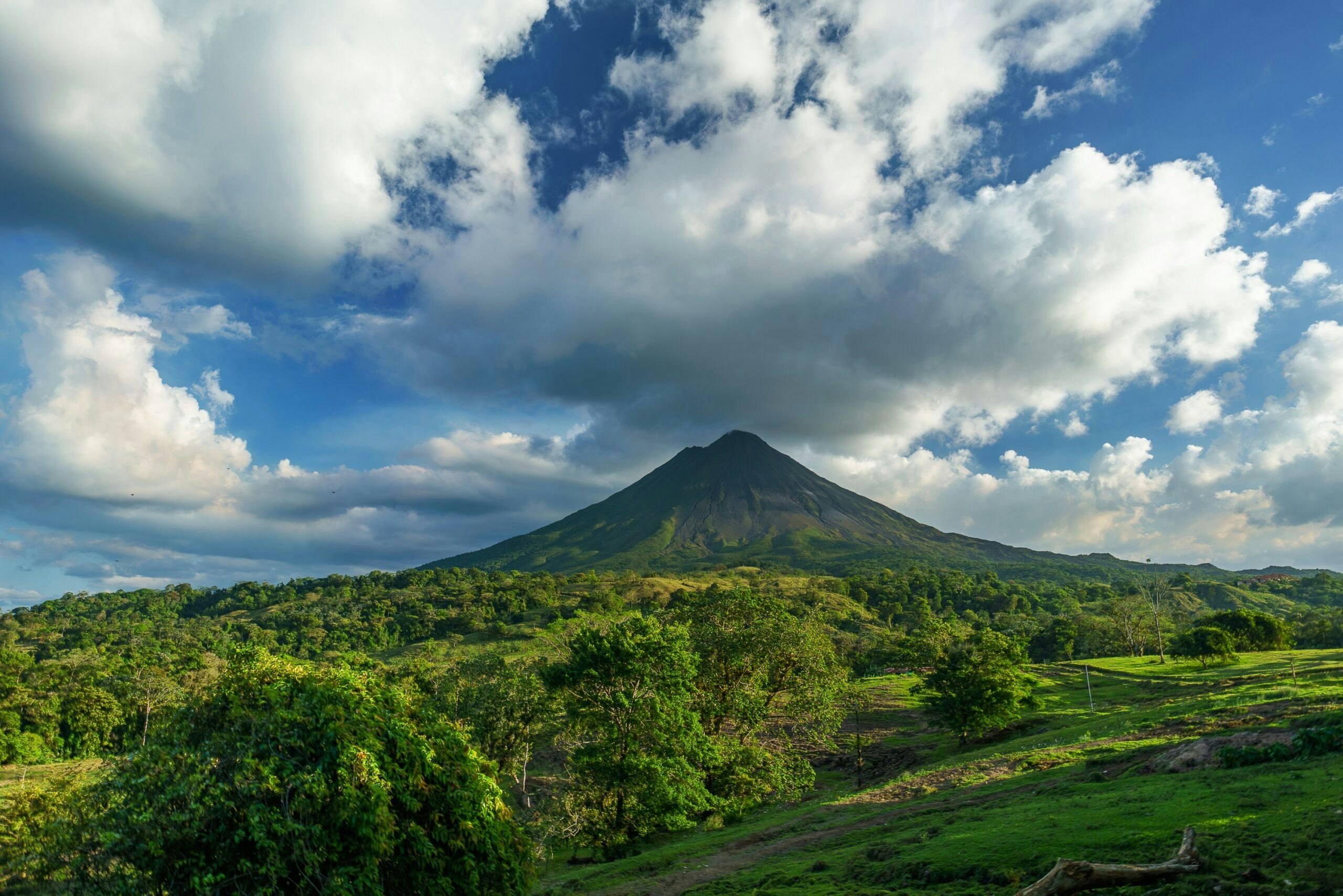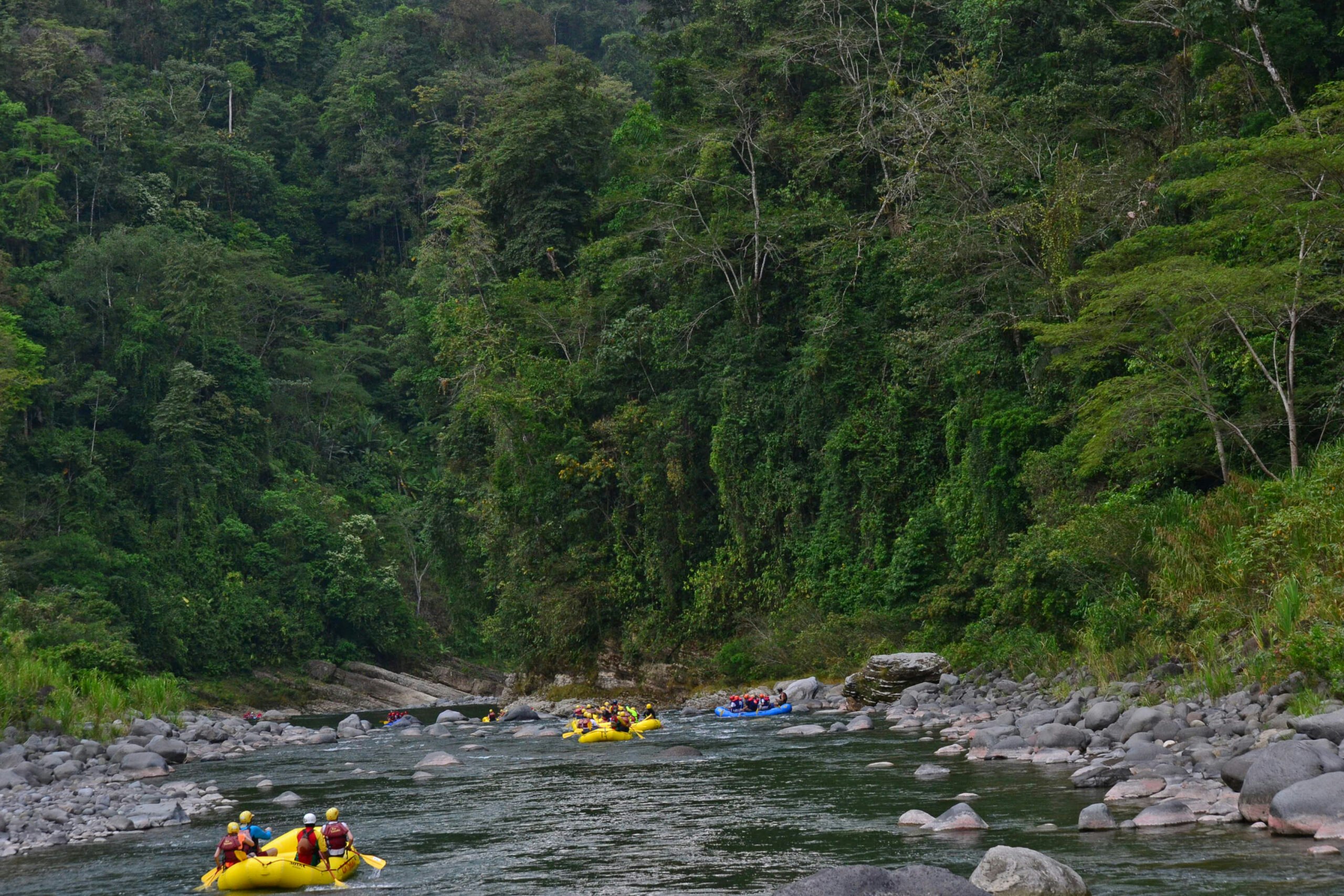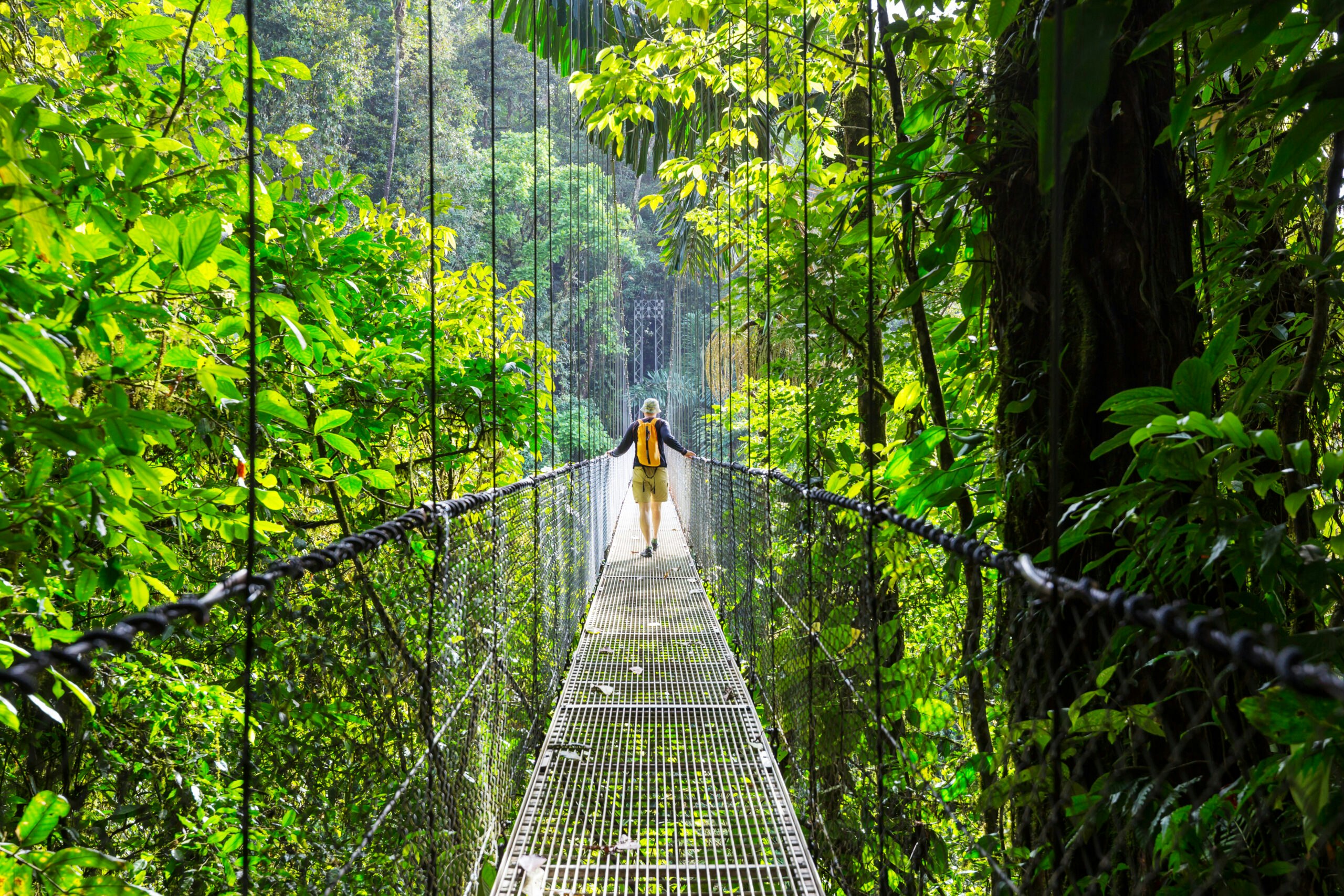Discover Costa Rica
With its lush rainforests, pristine beaches and towering volcanoes, this Central American paradise offers a diverse range of outdoor adventures, from zip-lining through the canopy to surfing in the Pacific Ocean. The country’s extensive network of national parks and wildlife reserves provide opportunities to spot exotic creatures such as howler monkeys, sloths, and colorful toucans. Costa Rica’s commitment to environmental sustainability and eco-tourism has made it a global leader in conservation efforts.
The warm and friendly Costa Rican people, known as “Ticos,” and their rich cultural heritage, including delicious cuisine and vibrant traditions, make this nation a welcoming and enticing destination for travelers seeking both outdoor adventure and cultural immersion.
Planning a trip to Costa Rica? Read on to find out when to visit, what to do, and more to make your vacation unforgettable.
What is the best time to visit Costa Rica?
Costa Rica experiences a dry season and a rainy season, but before you dismiss the rainy season, also known as the green season, read on about the pros and cons of each time of year. Keep in mind that Costa Rica is a country full of microclimates, so weather conditions often vary from one region to another.
Dry Season (mid-December to April)
The dry season, also known as high season is the most popular time to visit Costa Rica. Generally, the weather is sunny and dry, making it comfortable for most outdoor activities and exploring the Costa Rican scenery. Wildlife watching is excellent, as animals are more concentrated around water sources. The downside is that this is also the busiest time to visit, as many travelers flock to the country.
Rainy Season (May to November)
The green season brings the rainforest to life. Travelers can expect occasional afternoon showers with lush green landscapes. This is also a less crowded time to visit, if you don’t mind the less predictable weather. It’s a popular time with surfers due to more consistent swells. Be aware that some remote areas of the country may not be accessible if rainfall is heavy. Choosing the best time visit Costa Rica depends on your personal preference. Our experienced travel consultants are here to help you determine the best option for your dream trip.
What is the best way to get to Costa Rica?
From the mainland United States, there are nonstop flights to San Jose, Costa Rica’s capital, from many cities including Atlanta, Miami, New York, Washington DC, Chicago, Houston, Los Angeles, and Denver. There are also direct flights into Liberia, closer to the west coast, from a similar selection of US cities. Flight times depend on city pairs, for instance Miami to San Jose takes around 3 to 4 hours, while New York to San Jose can take more like 6 to 7 hours.
MT Sobek’s Costa Rica Tortuguero, Pacuare & Arenal Multi-Adventure Tour begins and ends in San Jose and does not require any internal flights. If you plan a custom Costa Rica adventure with us, we may recommend flying in to Liberia or flying to remote destinations within the country.
How to get around Costa Rica?
There are plenty of options for transportation in Costa Rica and which you’ll choose depends on your planned itinerary. Frequently small planes offer the most convenient route to remote areas and the country is well connected by domestic airlines. That said, the road system is relatively developed, if a bit hair-raising with winding mountain curves. We recommend using a professional driver if you decide to travel the Hummingbird Highway, Pan-American Highway or other aptly-named Costa Rican roads.
For those fit and interested in hiking, Costa Rica’s extensive system of national parks and reserves can be explored on foot, connecting with the country’s incredible biodiversity as you walk. Rafting and river cruises are another way to navigate to your destination, particularly in Tortuguero National Park and the Osa Peninsula. Along the coast a bicycle can get you to the beach for some surfing or into town for provisions.
Do I need a visa to visit Costa Rica?
American citizens do not need a visa to visit Costa Rica for stays of up to 90 days, just a valid passport and return ticket. Travelers are usually granted a tourist visa on arrival into the country. Because requirements change frequently, we recommend all travelers check with their nearest embassy before traveling to Costa Rica.
How many days should I spend in Costa Rica?
You can pack a lot into a week in Costa Rica, but if you have the time a more leisurely pace is preferable. Costa Rica offers an incredible range of experiences to explore: hiking cloud forests in search of sloths and quetzals; kayaking through rainforest watching for howler monkeys and basilisk lizards; taking a surfing lesson on a Pacific beach, or relaxing on Caribbean shores; rafting the rapids of the Pacuare River; soaking in the geothermal springs at the base of Mount Arenal; and so much more.
With 2-3 weeks you can fit more of these exciting experiences and more off the beaten track locations into your itinerary. Because there are so many ways to experience the country, Costa Rica makes an excellent destination for family adventure with fun for all ages and interests.
What are the top 5 places to visit in Costa Rica?
1. Arenal Volcano
This near-perfect volcanic cone stands out from its lush green surroundings in northern Costa Rica. Active as recently as 2009, the once-erupting volcano has now entered a quiet resting phase. Now hikers can explore trails around the base of the volcano offering scenic views and wildlife-watching opportunities. Geothermal activity still heats a collection of natural hot springs, perfect for a post-hike soak. You can also zip-line through the canopy for a bird’s-eye perspective or visit some of the cascading waterfalls in the region.
2. Tortuguero National Park
The “Land of the Turtles” is a remote and lush wilderness which plays a vital role in the preservation of several sea turtle species, including the endangered green sea turtles, who return to its shores year-round to lay their eggs. A series of canals wind their way inland from the northeast Caribbean coast, creating wetlands and riverine habitat for howler monkeys, toucans, caimans, and river otters. Explore the park by kayak or motorized boat, tracing mangrove forests and tropical rainforest. This park is a prime example of conservation in action that gives travelers a chance to reap the benefits.
3. Monteverde Cloud Forest Reserve
A renowned ecological gem situated in the Tilarán Mountains, Monteverde’s forest canopy is frequently enveloped in mists and clouds, supporting a diverse array of flora and fauna, including numerous orchid species, mosses, and epiphytic plants that thrive in the high humidity. Wild inhabitants include resplendent quetzals, howler monkeys, sloths, toucans, and hundreds of bird species, which can be spotted on hiking trails throughout the park. Suspension bridges get hikers off the forest floor and into the misty heights of the canopy. Monteverde’s higher elevation results in cooler temperatures compared to other parts of Costa Rica. Be prepared for frequent mist and rain, so bring suitable clothing for the variable weather conditions.
4. Pacuare River
One of the country’s most famous and picturesque rivers for white-water rafting, the Pacuare offers a combination of adrenaline-pumping rapids and stunning natural beauty. Flowing through pristine rainforest, the river is surrounded by the sights and sounds of the jungle. Watch for howler monkeys, sloths, toucans, and various species of birds as you float through this biodiverse corridor. Between calmer stretches the river features a range of white-water rapids which depending on the season and location can range from Class II to Class IV, offering an extra dose of excitement.
5. Manuel Antonio National Park
On the central Pacific coast of Costa Rica, Manuel Antonio is one of the country’s smallest yet most popular parks. The park contains pristine white sand beaches as well as coastal rainforest. Hiking trails wind along the coast with opportunities to observe capuchin and howler monkeys, sloths, iguanas, coatimundis, and a wide range of bird species. The ease of wildlife spotting, especially the playful capuchin monkeys, makes it a favorite among wildlife enthusiasts. Offshore, snorkeling and diving reveal a different sort of species with coral reef and tropical fish. Because of its popularity, Manuel Antonio limits the number of daily visitors so consider arriving early to avoid disappointment.

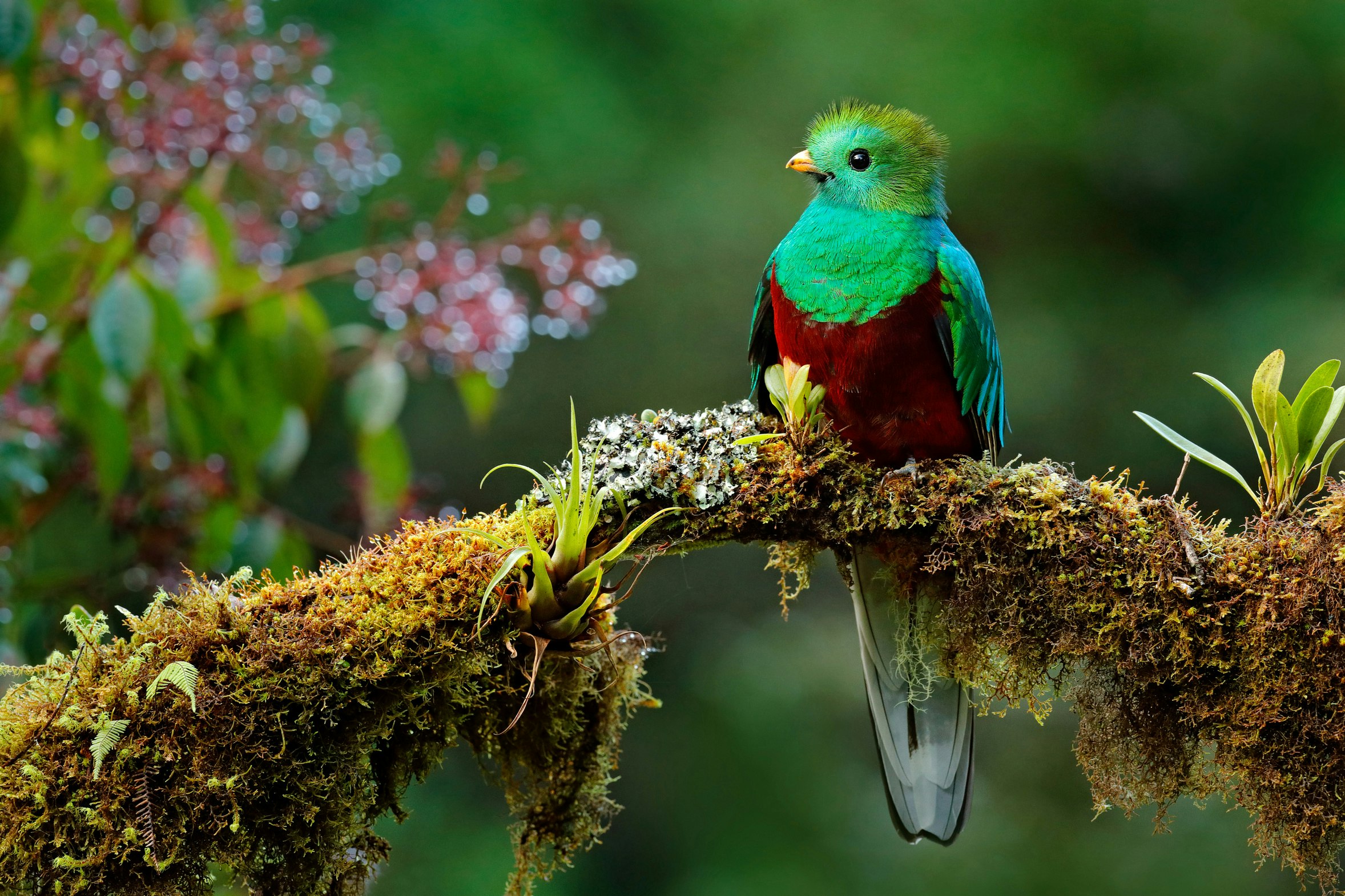
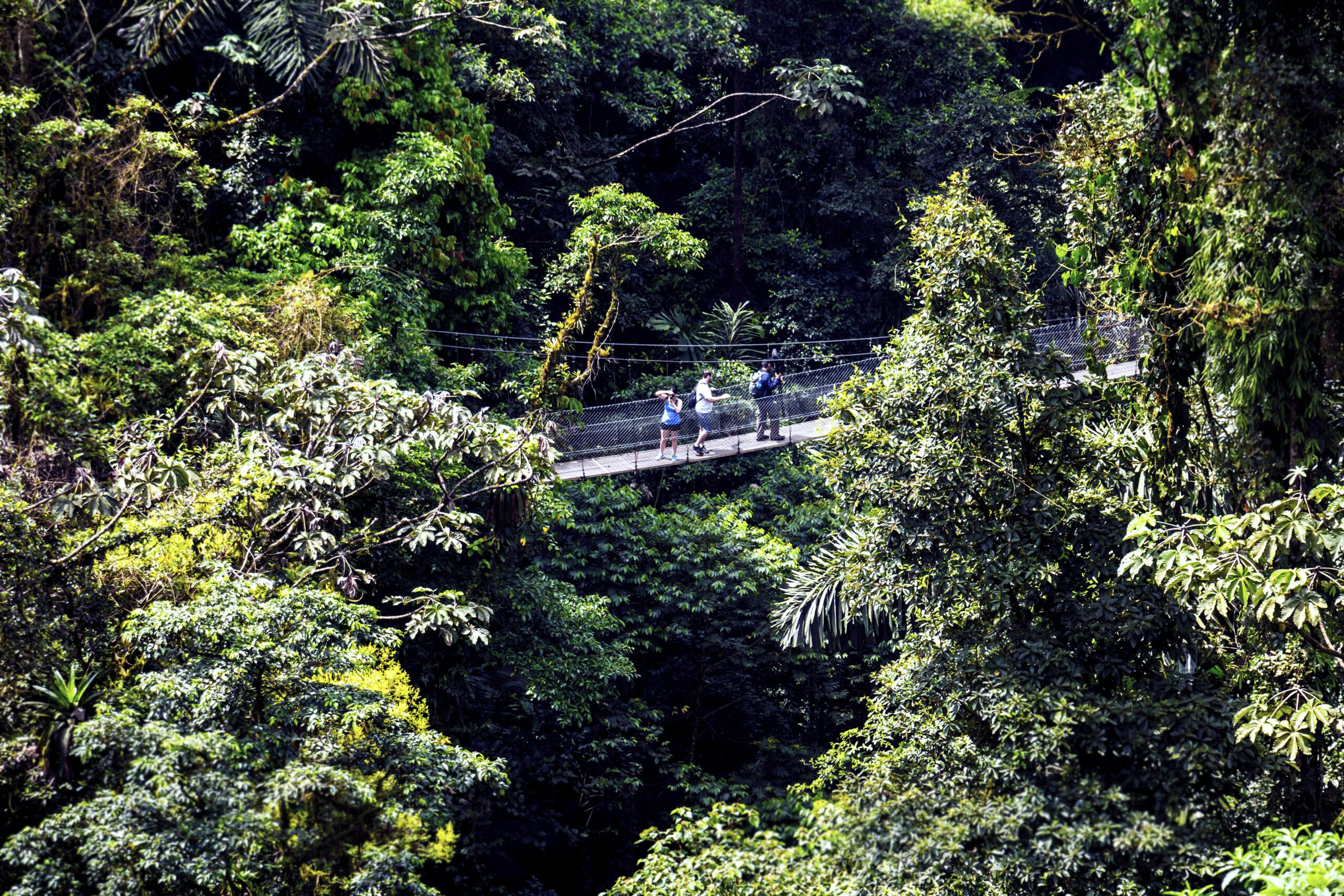
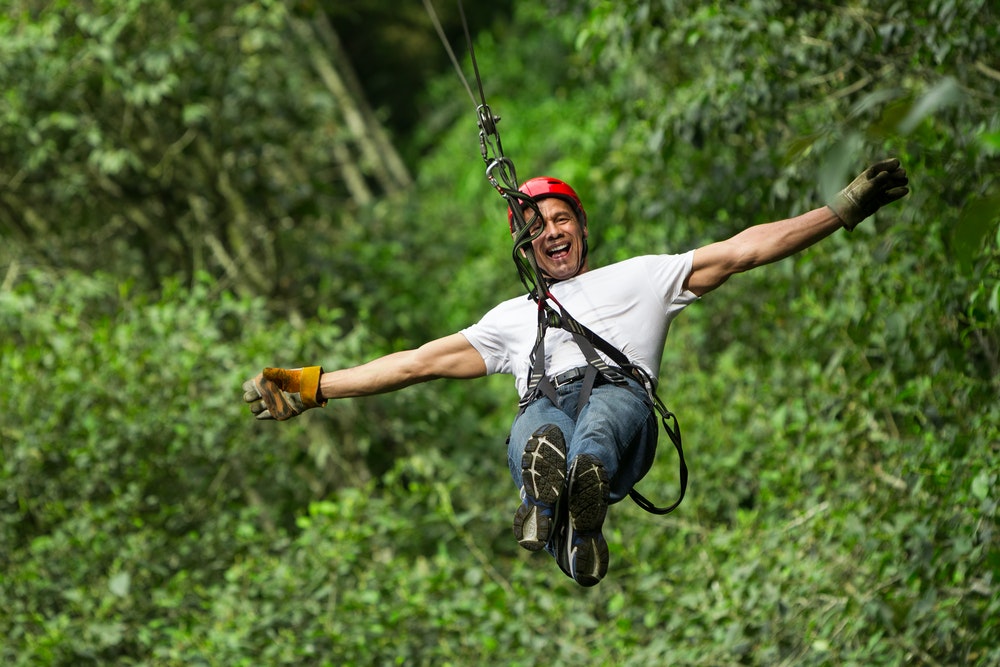
What are the best Costa Rica adventure tours?
Costa Rica Tortuguero, Pacuare & Arenal Multi-Adventure Tour
Discover the wildlife wonders of Costa Rica on this action-packed adventure with magical nights deep in the rainforest. Kayak the jungle waterways of remote Tortuguero National Park, raft the thrilling Río Pacuare, and hike the lava fields of Arenal Volcano National Park. Along the way, marvel at an astonishing rainbow of tropical wildlife from toucans and turtles to monkeys and blue morpho butterflies. Relax with an invigorating soak at mountain hot springs and take in the varied wildlife and scenery from perfect swimming pools and hammocks at our charming eco-lodges-two of which can only be reached by boat. This carefully crafted Costa Rica adventure captures the heart of this idyllic destination!
View Costa Rica Tortuguero, Pacuare & Arenal Multi-Adventure Tour
Where are the top places to stay in Costa Rica?
There is a wide range of accommodation options depending on your budget and priorities. For those wishing to get away from the cities, rustic cabins and lodges in the countryside offer peace and privacy. Costa Rica is known for its eco-lodges, which provide comfortable accommodation designed with sustainability in mind. Inclusive resorts take a hassle out of planning with activities and meals included.
1. Mawamba Lodge – Tortuguero
Nestled in the lush rainforest of the Tortuguero National Park, this lodge features lush gardens and rustic but comfortable accommodations, along with visits from brightly colored birds. Relax in the common areas, including the swimming pool, bar, entertainment areas (with foosball, pool, beach volleyball court, and table games), hike along the private trails, or grab a bite in the café.
2. Rios Lodge – Pacuare River
On the banks of the Pacuare River you’ll find simple accommodation, sustainably built using reclaimed wood and hydroelectric power. Make this your base to hike jungle trails, cool off in waterfall pools, check off your tropical bird list and enjoy an evening cocktail with a view of the river as toucans pass by overhead. Of course, the prime activity here is rafting the Pacuare, also an excellent way to reach this off-the-beaten-path gem.
Things to Know About Costa Rica
For a small country Costa Rica boasts about 5% of the world’s biodiversity with an extraordinary variety of ecosystems, flora and fauna, including 18% of the world’s known butterfly species. The country has 5 volcanoes, along with related geothermal springs and fascinating geology. The popular Costa Rican expression “pura vida” means “pure life” and is fitting for the relaxed, sustainable and optimistic Tico attitude. In keeping with that expression Costa Rica has no army and instead funds education, healthcare and conservation with funds that would have been spent on military.
What is the language in Costa Rica?
Spanish is the official language of Costa Rica, used for government, education and business. While Spanish is the dominant language, you may also hear indigenous languages such as Bribri, Cabécar, and Boruca, which are spoken by some of the indigenous communities in Costa Rica. English is spoken by many Costa Ricans who work in popular tourist areas, but it’s still handy to know a few Spanish phrases.
What to eat in Costa Rica?
The national dish of Costa Rica is gallo pinto, which is rice and black beans cooked together with onions, bell peppers and cilantro. It’s often served with eggs, cheese and sour cream. Other local favorites include sancocho, a hearty soup of chicken, yucca, corn and vegetables flavored with herbs and spices; tamales, corn dough filled with meat, vegetables and spices and steamed in a banana leaf; and ceviche, fresh seafood marinated in lime juice mixed with diced onions, bell peppers and cilantro. Plantains, a relative of the banana, are a staple and appear fried, mashed, savory and sweet.
What is the currency in Costa Rica?
While the US dollar is widely accepted and used in many tourist areas, especially for larger transactions, the official currency for all transactions and day-to-day expenses in Costa Rica is the Colón. Named after Christopher Columbus, known as “Cristóbal Colón” in Spanish, Colón banknotes feature portraits of notable figures on one side and the reverse showcases Costa Rica’s diverse ecosystems and wildlife. The coins also generally feature indigenous wildlife.
You can exchange currency at banks, exchange offices, and ATMs throughout the country. It’s a good practice to check the current exchange rate and have some local currency on hand for convenience, especially when traveling to more remote areas.
What is the electricity in Costa Rica?
Costa Rica is on the 120V system with Type A and B plugs, the same as in the United States so you do not need an adapter or voltage converter. A good resource to see images of plug types is www.power-plugs-sockets.com.
What is the time zone in Costa Rica?
Costa Rica operates on Central Standard Time (CST), which is UTC-6. However, it does not observe Daylight Saving Time, so there is no time change during the year. This means that Costa Rica is constantly 6 hours behind Coordinated Universal Time (UTC-6), making it a consistent and straightforward time zone for travelers to the country.
What to wear in Costa Rica?
Costa Rica contains a diverse range of microclimates so how you dress depends on where you are. If you’re headed to the coast you’ll want lightweight breathable clothing, swimsuit, flip flops and beach wear. In the rainforest, reach for moisture-wicking clothing and though it can be steamy, long sleeves and pants can protect from insects and sun. In the cloud forest temperatures can be markedly cooler, so you’ll want to dress in layers that can be adjusted throughout the day. Rain wear is recommended if you are traveling in the green season. Whether hiking in rain forest or cloud forest you’ll want a study pair of hiking boots with good tread, allowing you to scramble over rocks and roots without slipping.
If you are visiting urban areas, the dress code is less casual, particularly if you are visiting religious sites, when you should be sure to cover your shoulders and knees.
Consult an Expert for Costa Rica
We hope this advice is helpful in planning your trip. Consult one of our experts to plan your Costa Rica trip and get the latest advice on your destination.
